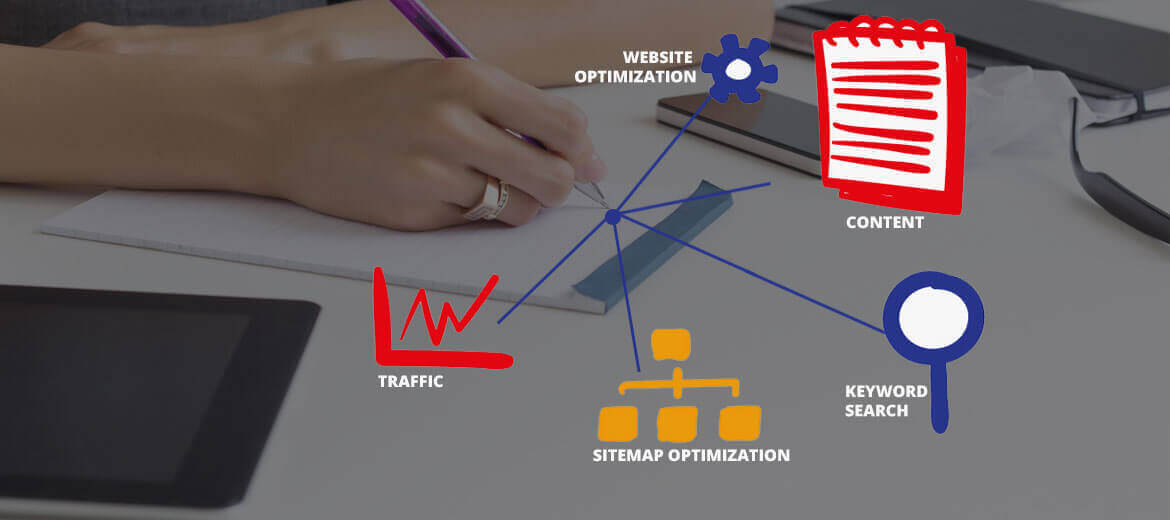Introduction

Your business is online! Now What? Definitely it is the SEO campaign that has to hit the second round. But before you take off with your SEO campaign, you first have to perform an analysis for your website. In more clear terms, you first have to undertake an SEO Audit. An SEO Audit is performed by an SEO Analyst and is a crucial step to interrogate the ups and downs of a website. Its functionality is similar to that of a doctor’s check-up where a professional finds out problems and cure them accordingly to outline a lucratively planned strategy for the future activities.
SEO Audit Steps!
The SEO audit is mainly divided into two parts:-
- Pre-audit
- Main-audit
SEO Audit – Pre-Audit!
n pre-audit the SEO executive checks for following (assuming you are an SEO service provider company):-
1) Talk to the Client: – The executive takes the brief idea about the website and his business and what are the expectations from them.
2) Define Goals: – After taking the entire requirement from the client you must set clear targets to be achieved as per client requirement.
3) Analytics: – This is a best free tool to do an analysis of your website traffic and see what segments/modules users are viewing on your site and many user engagement metrics like browser, city, bounce rate, time spent on site etc. These stats help to set a better strategy to focus on long term goals and make a brand reputation.
4) Webmaster Tools: – These are the most important tool provided by Google, this is best way to find problems in a website and correct them. This tool helps and gives tips to boost up in search engine rankings.
Also Read :- What Is an SEO Reseller Program
5) Google Ad words: – See if your client or yourself have ever used Google ad words or want to use, as this are good for giving a good start to a website as these are paid and with well-decided keywords your site can be visible to your desired audience and best part is you pay only if you get a visit on your site.
6) Are They Mobile? : – Executive also checks if the site is mobile friendly or not. Even after having responsive sites, Google might encounter some mobile friendliness issues. Since Google has officially declared that it will boost up rankings for mobile friendly websites after Mobilegeddon update, and people use mobile devices more to access web, therefore – it’s a win-win situation to Go mobile.
SEO Website Audit – Main Components!
Here are top things executive must keep in mind while performing final SEO audit:
1. Site Crawl: – It must be checked that site is indexed by search engines or not for this we use following syntax “site: site URL.”
For example: – Site:itxitpro.com
This will show all the pages indexed by that browser for that particular site only.
2. XML sitemap: – An XML file placed in a website for web crawlers basically so that when a crawler comes to our site it can index all our pages This is also taken as a positive point by crawler if a sitemap is there and regularly updated.
3. Robots.txt: – This is a file in which we enlist all the pages we don’t want to be indexed by search engines for example https://www.itxitpro.com/robots.txt And you can define separately for top search engines like http://www.amazon.com/robots.txt
4. Custom 404 Page: – If user requests a query which is not available on your website, a customized error page must be served to user. This is a custom landing page which is coded to handle not found queries and guide users about additional resources available on website. In case this page is not present, users might bounce back to search results.
5. Site Speed: – Speed is very important nowadays as in first 5 seconds of the site a user decides to stay or bounce, so we can check our website speed by Google developer’s page speed test.
6. Architecture and Site Structure: – The site architecture must be well structured and easy to navigate for users, use of breadcrumbs is a must to know where the user is currently on your site.
7. File and URL Names: – The URL and files of a site must be SEO friendly and not complex to understand. For example, if a site has digital marketing services and URL is ending with a typical code like xyz.com/11119988DM this is not good for SEO results it must be ending like xyz.com/digital-marketing.
8. Keywords: – This is the most important part of any audit as these are the targets we will be using to get the website ranking well in search engines. A deep research must be done for selecting target keywords according to goals of the client, with the help of webmasters and other couple of tools.
9. Content: – The content on the site must be well structured, and use of target keywords must not be too low or too high a moderate frequency must be maintained.
10. Duplicate Content: – The content on the site must be drafted as unique as possible and avoid duplicate content as this will harm the ranking in search engines. Duplicity will be harmful to any niche and help your competitors to get better ranking than you.
11. Rel-Canonical: – Canonicalization is used to handle duplicity on a website.
Ensure that all sub-pages creating using user-search or additional functionality meet correct canonical paths to reflect authority and juice to right URL.
12. Meta: – This is an important HTML tag which must be checked by an SEO auditor, as this is the content shown in search results. It also helps crawler to know about the content of the website and fetch results according to get most accurate results.
13. Images: – Heavy images website takes more time to load and hence create a bad user experience. Hence images must be compressed before uploading them to the website to make your site load faster. Since search engines can’t read images, always use Alt and Title attributes to reflect machines what an image is all about.
14: Link Audit: – Use Moz Pro or Ahrefs account to monitor your existing link profile. Is website linked with massive article/web-directories? To avoid algorithmic or manual penalty, a best practice is to conduct regular back-link audit and removing low-quality manipulative back-links which may not look natural to search engines.
Once all these steps are properly followed and executed, you can then implement SEO techniques. But the vital fact to remember is to keep a check on your website’s SEO functionality on a regular basis to ensure that your site achieves all the targets as delineated within the strategy.
Thank you for reading the blog, for more updates subscribe to our newsletter.















